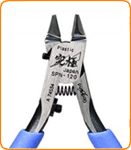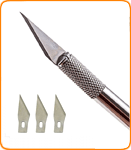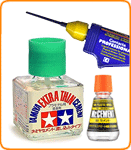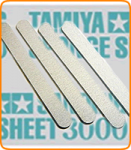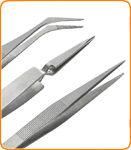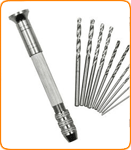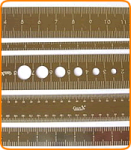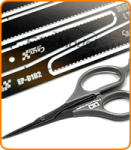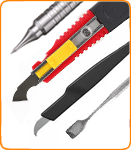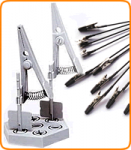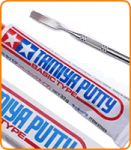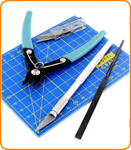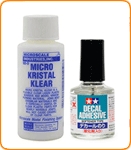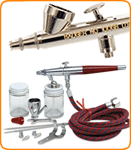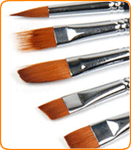Tamiya 61017 1/48 Nishikisuisen Rufe Kit
This is a plastic model kit, which comes unassembled and unpainted. So glue, model paints and other basic modelling tools are additionally required.
In 1939, the Naval Aviation Headquarters conceived a plan of trial manufacturing a floatplane fighter, a new type beyond all precedents in the world. On the assumption of landing and invading the Southern regions, the Japanese Navy intended in those days to station float planes in waterways and bays near the landing places until the completion of land air bases for the purpose of defending those under construction and occupied territories. Since the floatplanes might have to fight with enemy fighters in the air, they were required to be pure fighters comparing favourably with enemy fighters in performance. The Navy firmly believed that sufficiently armed floatplanes would be able to fight on equal terms with fighters considering that Type 95 Scout Seaplanes shot down Chinese fighters as successfully as did land based fighters at the early stage of the sino-Japanese incident. In 1940, the Naval Aviation Headquarters decided to trial manufacture floatplane fighters and ordered Kawanishi Aircraft, which was well experienced in manufacturing floatplanes, to trial manufacture them under the name of 15- Shi Floatplane fighter (later called Floatplane Fighter "Kyofu").
In the meantime, relations with the United Sates, Britain, etc. were gradually deteriorated and the possibility of rushing into war with them became larger day by day. Considering that war with the United States and Britain would be inevitable, the Department of Operations of the army mapped out a plan of campaign and requested the Aviation Headquarters to immediately develop and complete floatplane fighters which, in case of incading the Southern regions, were to take charge of air defence for advanced bases under construction and at the same time demanded that temporary floatplane fighters should be made available apart from the 15-Shi Floatplane Fighter which was then under order and was expected to be delivered to fighting units as late as 1943 (three years from then). The Naval Aviation Headquarters proposed remodelling the Type O Ship-Based Fighter Model 11 of Mitsubishi Aircraft, which exercised its power in the Chinese Continent and was recognized as an excellent plane, into floatplane fighter. This proposal was officially accepted at the beginning of 1941. The remodelling was to be conducted by Nakajima Aircraft which was also in charge of the mass production of the Zero Fighter. Like Kawanishi Aircraft, Nakajima was well experienced in the manufacture of floatplanes. Nakajima designers including Shinobu Mitsutake, head of Designing Department, had already designed the Type 90 and 95 scout Seaplanes of single-float type, the superiority of both having been fully recognized. Nakajima engaged in the remodelling work at Koizumi Plant night and day under the leadership of Shinobu Mitsutake, then chief engineer, and young designers including Atsushi Tajima. The remodelled version was tentatively named No.1 Suisen (A6M2-N). The remodelling work had to be made immediately, and three used Zero Fighters Modell 11 were utilized and remodelled into the first experimental planes.
The shape of the main float was accepted after model tests repeated at the Naval Air Technical Institute. Only about one year after the start of the plan, the first flight was successfully made at an aquatic base in Kasumigaura on 8th December 1941, i.e. the very day when the Pacific War began. After utility tests were repeated by seaplane units of Yokosuka and Oppama, the remodelled plane was officially accepted for mass production under the name of Type 2 Floatplane Fighter on 6th July, 1942. It was slightly lowered in performance as compared with the original Zero Fighter Model 11, e.g. the maximum speed was decreased from 534 km/h to 436 km/h and the cruising range from 2,220 km (when carrying no auxiliary fuel tanks) to 1,778 km. This was because the large float increased plane weight and air resistance. They Type 2 Floatplane Fighter still inherited excellent manoeuvrability from the Zero Fighter and had good taking off and landing ability and sea kindliness. The Type 2 Floatplane Fighter was a well-timed superior plane to be used for the purposed of defending isolated islands in the Pacific Ocean and air bases under construction until the completion of the 15-Shi Floatplane Fighter which was then being manufactured by Kawanishi. Powerfully armed with two 20 mm and two 7.7 mm machine guns, the Navy's hoped for new Type 2 Floatplane Fighter came to be sent to isolated islands in the South Seas and small islands in the north Seas in mid 1942 when the Japanese were still making brilliant drives on the enemy. In spiete of the handicap proper to a floatplane, it fought desperately with large bombers and fighters of the Allied Forces and rendered distinguished service. Even the Americans praised the Floatplane Fighter for its high performance on a level with the Zero Fighter. At the last stage of the war, most of floatplane fighter units on the front lost their planes and pilots, meeting with a glorious end.
Battles over the Solomon Islands
The Allies inititated a counterattack against the Japanese in a battle for Guadalcanal Island located at the southeast end of the Solomon Islands in the South Seas. It was clear that, if the Japanese had occupied Guadalcanal, an important point on the communication line between the United States and Australia, and completed air bases there, the Allies would have lost the command of the air from New Guinea to Australia and been brought into a critical situation. The Japanese Navy was constructing Lunga Field (the Americans called it Henderson Field) in Guadalcanal about 1,000km southeast of Rabaul, the key Japanese base for invading Australia, and Buin Field in Bougainville lying halfway between them. For the air defense of Lunga Field, the Navy constructed an aquatic base at Tulagi of Florida Island near Lunga Field and in mid June of 1942 stationed there a part of the 4th Air Fleet equipped with twelve Type 2 Floatplane Fighters and some Type O Observation Seaplanes and Type O Three Seater Scout Seaplanes. (The 4th Air Fleet was the first unit to use the Type 2 Floatplane Fighter). On the 7th August when the airfields were nearly completed, the Americans attacked Guadalcanal and Tulagi of Florida and occupied them in two days. The twelve Type 2 Floatplane Fighters of the 4th Air Fleet which fought to repulse the enemy attack carried a No.3 bomb under each main wing. (The No.3 bomb is a time bomb containing small balls of yellow phosphor. If dropped from above an enemy plane formation, it will explode in the air and scatter the balls to shoot down a number of planes at a time. The weight is 30 kg). They type 2 Floatplane Fighters dropped No.3 bombs against enemy planes flying in formation and used 20 mm and 7.7 mm machine guns against those flying separetely or scatteringly, inflicting great losses on the Allies. The detachment of the 4th Air Fleet, however, lost all it men and was annihilated at the fighting of 7th August. The Japanese immediately sent army troops from Rabaul to Guadalcanal with a view to recapturing Guadalcanal. Navy planes escorted them and bombed airfields under enemy occupation. Because the distance from Rabaul to Guadalcanal was the very limit of the Zero Fighter's cruising range, however, the Zero Fighter could not make sufficient attack or escort. Thus the Navy constructed an aquatic base in shortland Island lying 470 km southeast of Rabaul and organized the 11th Air Flotilla comprising planes of seven seaplane tenders including the Kamikawa Maru (19 Type 2 Floatplane Fighters, 54 Type O Observation Seaplanes and 13 type O Scout seaplanes). Using the beautiful shoal of Shortland as a runway, these planes took off to attack Allied planes from airfields which were completed after being captured by the Americans and also to escort the army reinforcements moving to Guadalcanal in place of land based planes of Rabaul. From 4th september to 9th November of 1942, they repeated fierce air battles day after day with bombers and fighters including the Grumman F4F over Kolombangara and Shortland Islands. By 7th November, they encountered more than 150 enemy planes and confirmed 17 shot down. On 10th October, Master Sergeants Kawai and Maruyama, each piloting a Type 2 Floatplane Fighter, engaged with 20 Grumman F4F's and were killed, but they fought desperately and shot down four, one of which by body cras. This fact eloquently speaks the skill and morale of Floatplane Fighter pilots. The Type 2 Floatplane Fighter was also widely used in bombing of Guadalcanal, reconnaissance, etc. through the use of Lekata, Santa Isabel Island as an intermediate base.
In 1939, the Naval Aviation Headquarters conceived a plan of trial manufacturing a floatplane fighter, a new type beyond all precedents in the world. On the assumption of landing and invading the Southern regions, the Japanese Navy intended in those days to station float planes in waterways and bays near the landing places until the completion of land air bases for the purpose of defending those under construction and occupied territories. Since the floatplanes might have to fight with enemy fighters in the air, they were required to be pure fighters comparing favourably with enemy fighters in performance. The Navy firmly believed that sufficiently armed floatplanes would be able to fight on equal terms with fighters considering that Type 95 Scout Seaplanes shot down Chinese fighters as successfully as did land based fighters at the early stage of the sino-Japanese incident. In 1940, the Naval Aviation Headquarters decided to trial manufacture floatplane fighters and ordered Kawanishi Aircraft, which was well experienced in manufacturing floatplanes, to trial manufacture them under the name of 15- Shi Floatplane fighter (later called Floatplane Fighter "Kyofu").
In the meantime, relations with the United Sates, Britain, etc. were gradually deteriorated and the possibility of rushing into war with them became larger day by day. Considering that war with the United States and Britain would be inevitable, the Department of Operations of the army mapped out a plan of campaign and requested the Aviation Headquarters to immediately develop and complete floatplane fighters which, in case of incading the Southern regions, were to take charge of air defence for advanced bases under construction and at the same time demanded that temporary floatplane fighters should be made available apart from the 15-Shi Floatplane Fighter which was then under order and was expected to be delivered to fighting units as late as 1943 (three years from then). The Naval Aviation Headquarters proposed remodelling the Type O Ship-Based Fighter Model 11 of Mitsubishi Aircraft, which exercised its power in the Chinese Continent and was recognized as an excellent plane, into floatplane fighter. This proposal was officially accepted at the beginning of 1941. The remodelling was to be conducted by Nakajima Aircraft which was also in charge of the mass production of the Zero Fighter. Like Kawanishi Aircraft, Nakajima was well experienced in the manufacture of floatplanes. Nakajima designers including Shinobu Mitsutake, head of Designing Department, had already designed the Type 90 and 95 scout Seaplanes of single-float type, the superiority of both having been fully recognized. Nakajima engaged in the remodelling work at Koizumi Plant night and day under the leadership of Shinobu Mitsutake, then chief engineer, and young designers including Atsushi Tajima. The remodelled version was tentatively named No.1 Suisen (A6M2-N). The remodelling work had to be made immediately, and three used Zero Fighters Modell 11 were utilized and remodelled into the first experimental planes.
The shape of the main float was accepted after model tests repeated at the Naval Air Technical Institute. Only about one year after the start of the plan, the first flight was successfully made at an aquatic base in Kasumigaura on 8th December 1941, i.e. the very day when the Pacific War began. After utility tests were repeated by seaplane units of Yokosuka and Oppama, the remodelled plane was officially accepted for mass production under the name of Type 2 Floatplane Fighter on 6th July, 1942. It was slightly lowered in performance as compared with the original Zero Fighter Model 11, e.g. the maximum speed was decreased from 534 km/h to 436 km/h and the cruising range from 2,220 km (when carrying no auxiliary fuel tanks) to 1,778 km. This was because the large float increased plane weight and air resistance. They Type 2 Floatplane Fighter still inherited excellent manoeuvrability from the Zero Fighter and had good taking off and landing ability and sea kindliness. The Type 2 Floatplane Fighter was a well-timed superior plane to be used for the purposed of defending isolated islands in the Pacific Ocean and air bases under construction until the completion of the 15-Shi Floatplane Fighter which was then being manufactured by Kawanishi. Powerfully armed with two 20 mm and two 7.7 mm machine guns, the Navy's hoped for new Type 2 Floatplane Fighter came to be sent to isolated islands in the South Seas and small islands in the north Seas in mid 1942 when the Japanese were still making brilliant drives on the enemy. In spiete of the handicap proper to a floatplane, it fought desperately with large bombers and fighters of the Allied Forces and rendered distinguished service. Even the Americans praised the Floatplane Fighter for its high performance on a level with the Zero Fighter. At the last stage of the war, most of floatplane fighter units on the front lost their planes and pilots, meeting with a glorious end.
Battles over the Solomon Islands
The Allies inititated a counterattack against the Japanese in a battle for Guadalcanal Island located at the southeast end of the Solomon Islands in the South Seas. It was clear that, if the Japanese had occupied Guadalcanal, an important point on the communication line between the United States and Australia, and completed air bases there, the Allies would have lost the command of the air from New Guinea to Australia and been brought into a critical situation. The Japanese Navy was constructing Lunga Field (the Americans called it Henderson Field) in Guadalcanal about 1,000km southeast of Rabaul, the key Japanese base for invading Australia, and Buin Field in Bougainville lying halfway between them. For the air defense of Lunga Field, the Navy constructed an aquatic base at Tulagi of Florida Island near Lunga Field and in mid June of 1942 stationed there a part of the 4th Air Fleet equipped with twelve Type 2 Floatplane Fighters and some Type O Observation Seaplanes and Type O Three Seater Scout Seaplanes. (The 4th Air Fleet was the first unit to use the Type 2 Floatplane Fighter). On the 7th August when the airfields were nearly completed, the Americans attacked Guadalcanal and Tulagi of Florida and occupied them in two days. The twelve Type 2 Floatplane Fighters of the 4th Air Fleet which fought to repulse the enemy attack carried a No.3 bomb under each main wing. (The No.3 bomb is a time bomb containing small balls of yellow phosphor. If dropped from above an enemy plane formation, it will explode in the air and scatter the balls to shoot down a number of planes at a time. The weight is 30 kg). They type 2 Floatplane Fighters dropped No.3 bombs against enemy planes flying in formation and used 20 mm and 7.7 mm machine guns against those flying separetely or scatteringly, inflicting great losses on the Allies. The detachment of the 4th Air Fleet, however, lost all it men and was annihilated at the fighting of 7th August. The Japanese immediately sent army troops from Rabaul to Guadalcanal with a view to recapturing Guadalcanal. Navy planes escorted them and bombed airfields under enemy occupation. Because the distance from Rabaul to Guadalcanal was the very limit of the Zero Fighter's cruising range, however, the Zero Fighter could not make sufficient attack or escort. Thus the Navy constructed an aquatic base in shortland Island lying 470 km southeast of Rabaul and organized the 11th Air Flotilla comprising planes of seven seaplane tenders including the Kamikawa Maru (19 Type 2 Floatplane Fighters, 54 Type O Observation Seaplanes and 13 type O Scout seaplanes). Using the beautiful shoal of Shortland as a runway, these planes took off to attack Allied planes from airfields which were completed after being captured by the Americans and also to escort the army reinforcements moving to Guadalcanal in place of land based planes of Rabaul. From 4th september to 9th November of 1942, they repeated fierce air battles day after day with bombers and fighters including the Grumman F4F over Kolombangara and Shortland Islands. By 7th November, they encountered more than 150 enemy planes and confirmed 17 shot down. On 10th October, Master Sergeants Kawai and Maruyama, each piloting a Type 2 Floatplane Fighter, engaged with 20 Grumman F4F's and were killed, but they fought desperately and shot down four, one of which by body cras. This fact eloquently speaks the skill and morale of Floatplane Fighter pilots. The Type 2 Floatplane Fighter was also widely used in bombing of Guadalcanal, reconnaissance, etc. through the use of Lekata, Santa Isabel Island as an intermediate base.
| General Info | |
| Scale | 1/48 |
| Type | Scale Model Kit |
| Subtype | Military Aircraft |
- Stock: Out Of Stock
- Reward Points: 17
- SKU: TM 61017
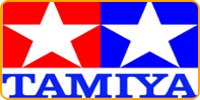
Tamiya
MRP: US$14.14 Save: US$2.79
19% OFF
US$11.35
(excl. Tax)
"In-Stock" Really Means It
Combine Shipping & Save
SAME or Next day shipping*
There are no reviews
Maybe you can help? Many users will be grateful to you. And so are we.













